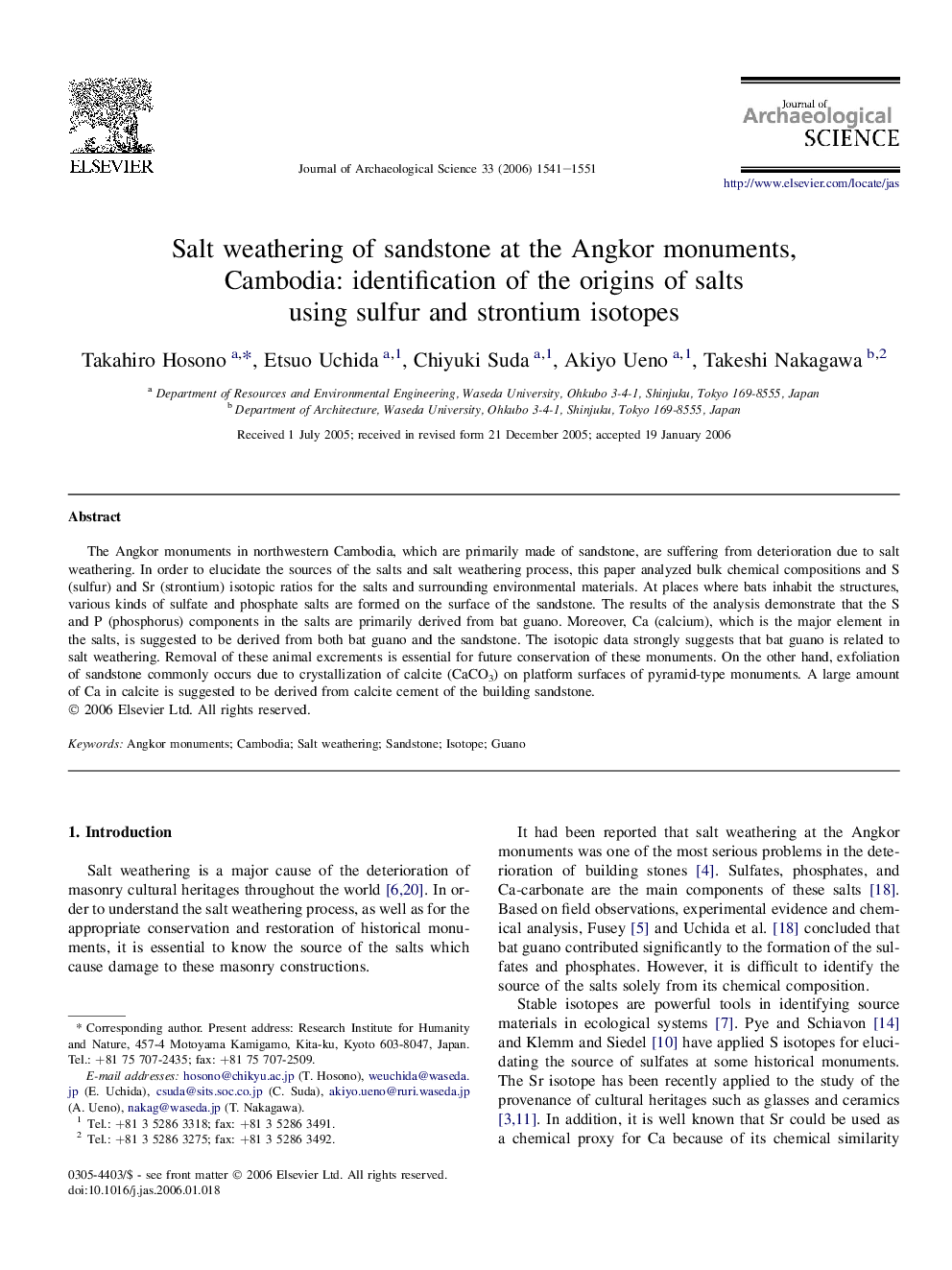| Article ID | Journal | Published Year | Pages | File Type |
|---|---|---|---|---|
| 1037776 | Journal of Archaeological Science | 2006 | 11 Pages |
The Angkor monuments in northwestern Cambodia, which are primarily made of sandstone, are suffering from deterioration due to salt weathering. In order to elucidate the sources of the salts and salt weathering process, this paper analyzed bulk chemical compositions and S (sulfur) and Sr (strontium) isotopic ratios for the salts and surrounding environmental materials. At places where bats inhabit the structures, various kinds of sulfate and phosphate salts are formed on the surface of the sandstone. The results of the analysis demonstrate that the S and P (phosphorus) components in the salts are primarily derived from bat guano. Moreover, Ca (calcium), which is the major element in the salts, is suggested to be derived from both bat guano and the sandstone. The isotopic data strongly suggests that bat guano is related to salt weathering. Removal of these animal excrements is essential for future conservation of these monuments. On the other hand, exfoliation of sandstone commonly occurs due to crystallization of calcite (CaCO3) on platform surfaces of pyramid-type monuments. A large amount of Ca in calcite is suggested to be derived from calcite cement of the building sandstone.
